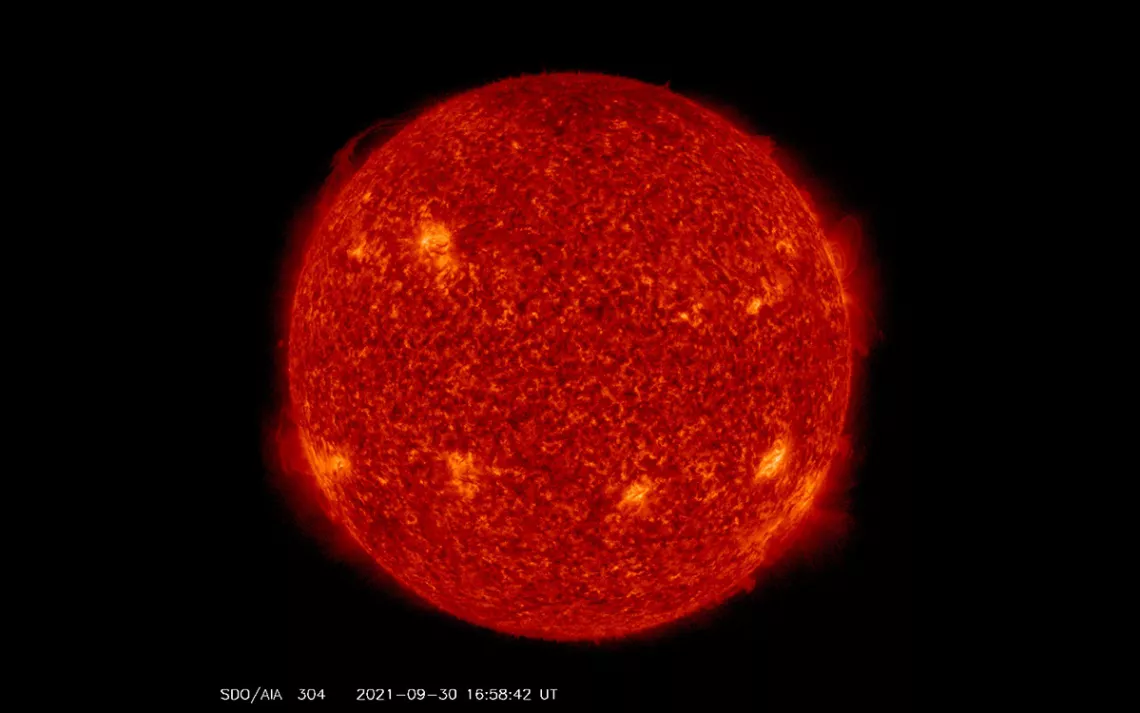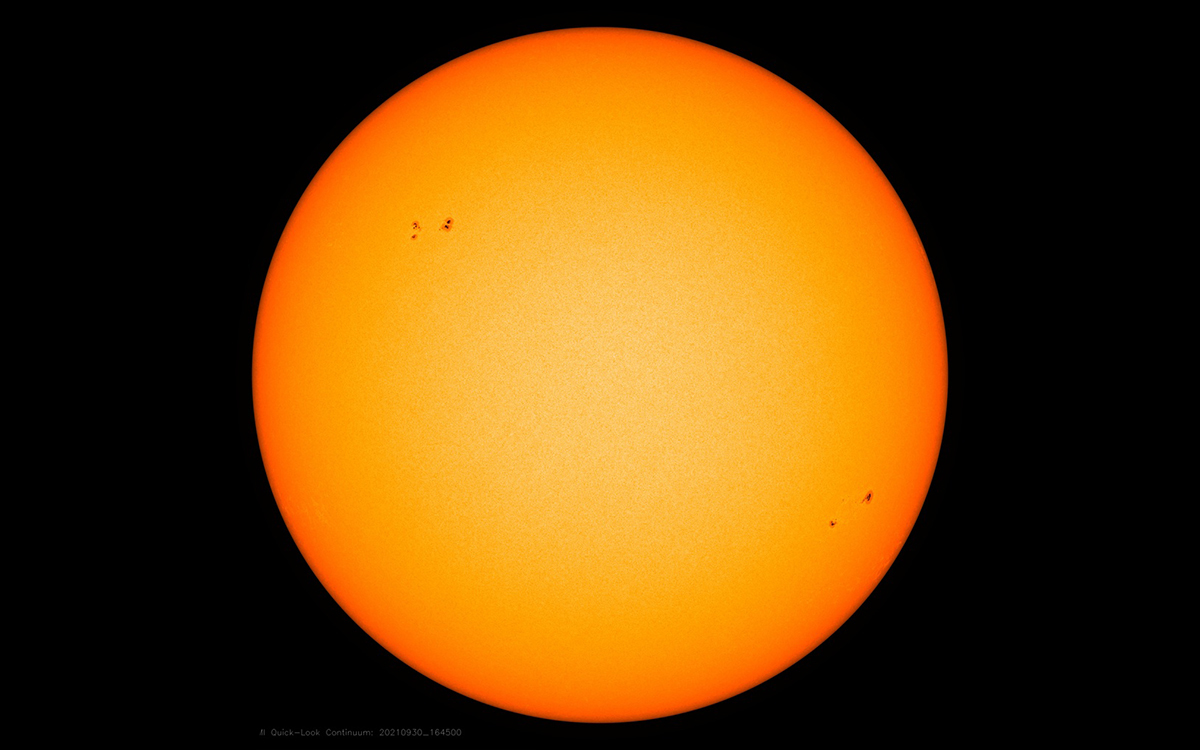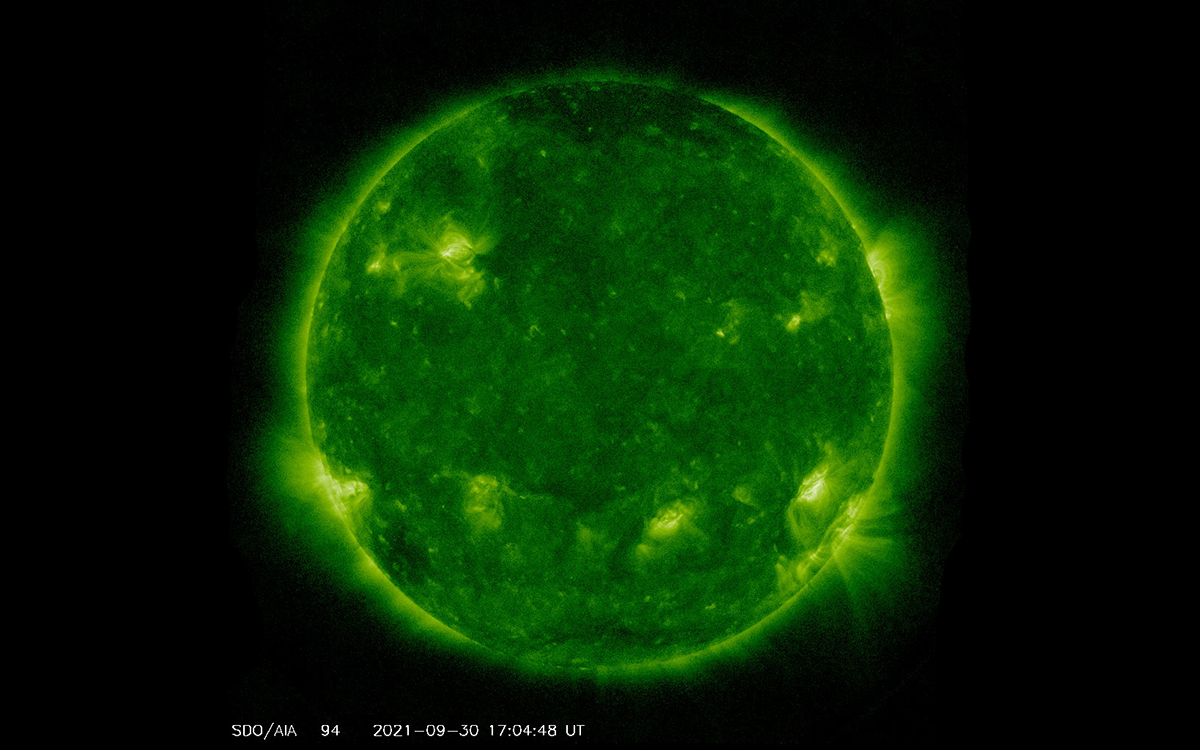October Stargazing: The Unconquerable Sun
The terrible, life-giving power of our nearest star

Photos courtesy of NASA/SDO
When my children were younger and we took to the road, one tune—"Why Does the Sun Shine?”—by the band They Might Be Giants played on near-constant repeat. I can still hear the thrum of the engine and the kids in the back seat, singing along with the playful, plaintive voice of John Linnell:
The sun is a mass of incandescent gas
A gigantic nuclear furnace
Where hydrogen is built into helium
At a temperature of millions of degrees
They Might Be Giants, as it happened, would later issue a correction after learning from a perceptive fan that the sun is not, in fact, made of gas. The amendment came in the form of another song, in which they more accurately (but just as whimsically) described the sun as a “miasma of incandescent plasma.”
Sometimes, on sunny days, I think of those lyrics. But it’s hard to take a lighthearted view of the sun anymore. In California, where I live, the smiling yellow star drawn by generations of children has been replaced on too many days by a fearsome red disk swathed in wildfire smoke. Of course, the sun itself hasn’t changed. But by injecting millions of tons of carbon into Earth’s atmosphere, we have intensified its impact on the planet and made our relationship with this life-giving star increasingly fraught.
Even though the sun is considered an “average” star, the energy it produces is mind-boggling. Like stars elsewhere in the cosmos, it creates energy by way of fusion reactions in its core. At any moment, 173,000 terawatts' (tera, for trillion) worth of solar energy strikes Earth—an amount that exceeds the world's total energy use by 10,000 times.
Without that light and heat, “there’d be no you and me,” as the They Might Be Giants song reminds us. But the sun’s bounty depends entirely on our position in relation to it. Earth sits at an average distance of 93 million miles from the sun, the so-called Goldilocks zone, a narrow orbital sliver in which life is possible. By one estimate, Earth would become uninhabitable if its average distance to the sun were reduced by as little as 1 percent, or 930,000 miles.
Except for in the very deepest parts of the ocean, the sun is the energy source for all living things. A trip back to 7th-grade biology class reminds us, however, that only plants and certain kinds of microorganisms can capture sunlight directly and turn it into cellular energy. They perform this feat by way of photosynthesis, which uses the energy of sunlight to transform carbon dioxide and water into oxygen and carbohydrates.


For hundreds of millions of years, plants and microorganisms have harvested solar energy. As microscopic photosynthetic organisms in the ocean died, they rained down onto the ocean floor, layer by microscopic layer. (On land, a similar process played out with plants and trees.) Over millions of years, this material deepened and compressed into vast deposits of fossil fuels. Those who have made a living by singing the praises of gas and oil (while simultaneously bashing the nonviability of solar power) conveniently forget that petroleum is fundamentally derived from solar energy. Of course, combusting oil and gas is a dirty, inefficient substitute for the elegant conversion of sunlight to energy that even the lowliest of weeds are capable of carrying out.

Sign up to receive Sierra News & Views
Get articles like this one sent directly to your inbox weekly.
With this action you affirm you want to receive Sierra Club communications and may vote on policy designated by the Sierra Club Board.
We’ve been burning up the sludgy, sooty remains of dead photosynthetic organisms with reckless abandon for the last two and a half centuries, tapping into hundreds of millions of years' worth of ancient sunlight—and, in the process, releasing hundreds of millions of years' worth of stored carbon into the atmosphere.
Our fossil fuel addiction has drastically increased the concentration of carbon dioxide in the atmosphere. Today, it hovers around 420 parts per million, higher than it has been at any point in the last 800,000 years. That excess carbon, along with other greenhouse gases, has greatly enhanced the power of the sun, achieving the same effect as moving Earth closer to the sun. This has driven deadly shifts in climate patterns. Solar energy absorbed by the waters of the Atlantic, for example, drives evaporation, which, in turn releases heat into the atmosphere and fuels the formation of tropical storms and hurricanes. The warmer the ocean water, the greater the rate of evaporation and the stronger the storms. Solar heating of land increases evapotranspiration rates in plants. When those rates rise without a subsequent increase in precipitation to offset the losses—as has happened in large swaths of the mid-latitudes—forests dry out, making them more susceptible to disease, insect outbreaks, and fires.
According to the Intergovernmental Panel on Climate Change, we have less than a decade to cut emissions by 45 percent if we hope to keep planetary warming under 1.5 degrees Celsius (or, if you prefer, 2.7 degrees Fahrenheit) and avert climate catastrophe. There are nascent efforts underway to curb emissions. One project that recently came online in Iceland, for example, will suck carbon out of the atmosphere and inject it deep underground. But, at present, these gestures are insufficient to stem the tide of carbon we continue to inject into the atmosphere. If we don’t take drastic measures to protect Earth’s atmosphere, by reducing emissions and rapidly deploying clean, sustainable forms of energy, our planet will continue to suffer intensifying droughts, fires, and storms.
The sun can’t be conquered—but we most certainly can.
WHAT TO LOOK FOR IN OCTOBER
Astronomy isn’t limited to nighttime. One of the most fascinating objects in the sky, the sun, is visible during the day. Because it is so close, the sun has yielded important insights about the formation, composition, and behavior of other stars in the cosmos. To view it safely, however, one must have the right gear, including thick filters and special lenses. If you aren’t properly equipped, it’s best to check it out by way of live, online feeds of several solar observatories, including NASA’s Solar Dynamics Observatory, which shows live views of our parent star in various wavelengths. The images are taken by the SDO satellite, which gives astronomers a comprehensive, real-time glimpse of the sun’s surface and phenomena such as solar flares and sunspots.
The longer October nights are a good time to look for planetary nebulae, strange objects left behind by a massive class of stars known as red giants. When red giants near the end of their lives, they often eject massive puffs of ionized gas. Through telescope-mounted cameras, these weird clouds are filled with kaleidoscopic colors and take on strange shapes, often rings and glowing orbs. A particularly beautiful planetary nebula is the Dumbbell Nebula, located in the constellation Vulpecula, which at this time of year is located almost directly overhead at sundown. Though its bright palette of colors will not be visible, the Dumbbell’s wispy outline can easily be seen through a pair of binoculars.
If you plan to seek out the Dumbbell, be sure to do it well before October 20. That is the date that the Hunter’s Moon will rise and wash out many of the dimmer objects visible in the night sky. This month’s moon is also sometimes called the Freezing Moon by the Ojibwe tribe, because its rise coincides with falling nighttime temperatures, a prelude to the long nights of winter.
 The Magazine of The Sierra Club
The Magazine of The Sierra Club



